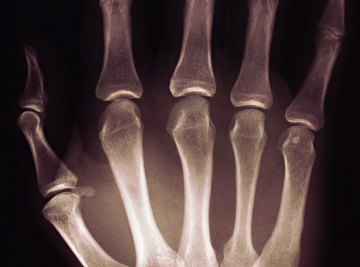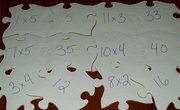
A boring, old math lecture cannot do a sequence as interesting as the Fibonacci sequence justice. Parents, tutors and teachers of the Fibonacci sequence have the opportunity to engage their students’ senses of curiosity and natural knowledge to educate them on this particular set of numbers. An activity on the Fibonacci sequence should involve mystery, relevance to the real world and some independent thought.
Secret of the Sequence
An easy way to introduce the Fibonacci sequence is to simply write it on the board, using the mystery of the numbers to stir up curiosity in your students. Write the first handful of numbers in the Fibonacci sequence on the board. To ensure you’ve given your students a fair chance at guessing the secret of the sequence, use at least the first eight numbers in the sequence: 0, 1, 1, 2, 3, 5, 8, 13. Give them some time to figure out the pattern. In a big class, you’ll almost always have at least one student get it within a couple minutes. If not, explain the pattern: You add the previous two numbers to get the resulting third.
Getting Real
Understanding the pattern in the Fibonacci sequence is a simple activity that adds little to a student’s education. Take the next step by relating it to the real world. After all, the Fibonacci sequence stems from nature. Prepare examples of the Fibonacci sequence appearing in nature and bring them to your class. After introducing the mysterious Fibonacci sequence on the board, pass out your examples and ask your students to figure out how these examples are related to the sequence on the board. For example, you might bring in pictures of different types of flowers or -- even better -- real flowers. Your students should eventually see that these flowers have numbers of petals corresponding with the numbers in the Fibonacci sequence.
Math Is History
Once your students are aware of how the Fibonacci sequence is a true natural phenomenon, bring up the Fibonacci’s classic puzzle, which is suitable for nearly any age group: Fibonacci’s Rabbits. Explain the puzzle in a way suitable for your students’ age group: Every month, a couple of rabbits mates, making the female pregnant. After one month’s time, the female gives birth to another couple of rabbits. The process repeats itself with the same timeline, with a female rabbit always giving birth to a male-female couple of rabbits. Ask your students how many couples there will be in one year’s time. Your students should find that the answer follows the Fibonacci sequence!
Finish Your Job
A teacher’s job is to make herself redundant. Finish your job by unleashing your students onto the world, looking for the Fibonacci sequence in nature. Assign them a project at a suitable difficulty that either extends their knowledge on the Fibonacci or that pushes them to look for other mathematical patterns in life or nature. For example, you might request that your students find other examples of the Fibonacci sequence in nature, writing reports on the examples they choose. Or you might ask them to use another mathematical sequence to search for natural phenomena adhering to that pattern. Either way, your students should demonstrate a strong grasp on sequences and how they relate to real life.
References
- Teaching Mathematics: A Sourcebook of Aids, Activities, and Strategies; Max Sobel, Evan Maletsky
- University of Surrey: Fibonacci Numbers and Nature
About the Author
Having obtained a Master of Science in psychology in East Asia, Damon Verial has been applying his knowledge to related topics since 2010. Having written professionally since 2001, he has been featured in financial publications such as SafeHaven and the McMillian Portfolio. He also runs a financial newsletter at Stock Barometer.
Photo Credits
Image Source/Photodisc/Getty Images
